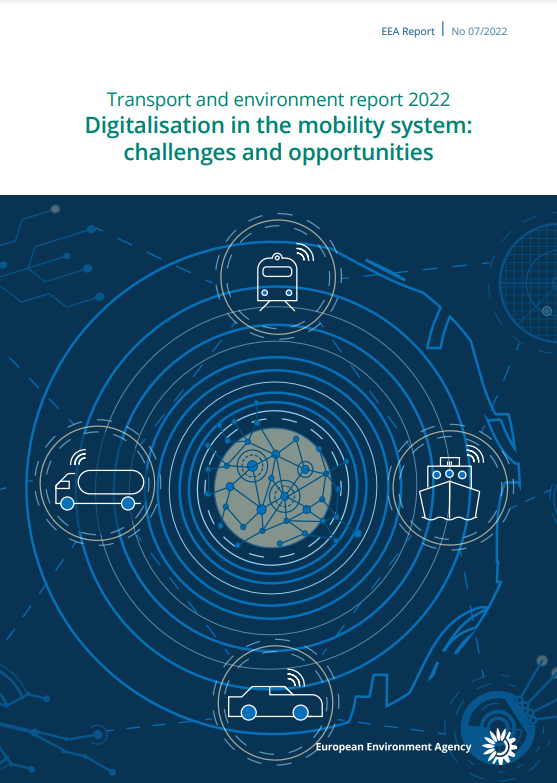All official European Union website addresses are in the europa.eu domain.
See all EU institutions and bodiesDigitalisation plays an ever-increasing role in our mobility, shaping the way the system and our society evolve. To fully realise the potential that technology could bring, it will be fundamental to let environmental considerations guide this transformation. This way, we will come closer to achieving a sustainable and just transition.

Transport and environment report 2022
EEA Report 07/2022
31 Aug 2023
In this report, we explore how and to what extent digitalisation can be instrumental in reducing the environmental impacts of passenger and freight transport in urban and non-urban settings. To do so, we discuss nine, digitally-enabled technologies that are currently central in mobility-related policymaking: teleworking and virtual mobility, autonomous passenger and freight transport, multimodal services, smart logistics, digital tools for demand management, air traffic management, and digital monitoring solutions for greenhouse gases and air pollution emissions.
In all of those domains, digitalisation has the potential to make the mobility system more sustainable and promote positive behavioural shifts, fair business models and system(s)-wide optimisation. At the same time, digitalisation can exacerbate pressures exerted on the environment: it can increase demand for transportation due to improved efficiency and reduced costs, and make less sustainable personal mobility modes more attractive. To realise the potential digital technologies could bring, it will be fundamental to keep a close eye on potential impacts. This way, we will come closer to achieving a sustainable and just transition.
EN PDF: TH-AL-22-015-EN-N - ISBN: 978-92-9480-519-5 - ISSN: 1977-8449 - doi: 10.2800/47438
Key messages
The mobility system’s digital transformation is ongoing. Digital technologies are playing an ever-increasing role in the system. Depending on how this will be managed, the effects may be very different.
While potentially transformative, digitalisation is not always driven by sustainability. This means that it could impact the sustainability transition in various ways.
While digital technologies can bring immediate benefits like efficiency improvements, they can also have indirect effects that can be much harder to predict and can strongly reduce benefits for the environment — or even worsen the pressures.
The mobility system has so far failed to deliver a significant reduction in GHG emissions. Incremental increases in efficiency have been overcompensated by increases in the demand for mobility services.
Nevertheless, digitalisation has the potential to foster incremental efficiency gains while also reducing the ever-increasing demand for services through system-wide optimisation. Societal benefits and impacts will be essential to consider alongside technological challenges.
Annexes: how digital technologies could improve the environmental performance of transport
Explore the different technologies below:









